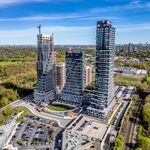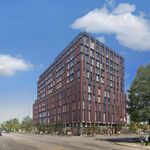S
scarberiankhatru
Guest
"The location of Lakeshore isn't the only reason."
It's the main reason.
It's the main reason.
Barrier doesn't just mean something you can't walk across - it also refers to psychological barriers. Having a hulking structure blocking one's view along a linear route can easily be considered as one.
The traffic nightmare already exist everyday during the rush, both on the corridor in question and on the avenues to which it feeds from. Changing it to an at-grade roadway would make no difference to such whatsoever.
New York's Westside Highway. Formerly elevated as well. When it started to fall down they removed it. Traffic issues did not materialize. Wouldn't the Lakeshore look better like this? And even though the cars do move fast it is much less of a barrier to cross (both physical and psychological) than the Lakeshore/Gardiner is today. My only issue with the Great Street is that it should start at Bathurst.
Spending ~ 1 billion dollars to try and fix a collective psychological ailment is not money well spent. Is the Gardiner Ideal? no. Does it do its job? yes. Maybe license graffiti artists to paint the concrete pillars and friendly up lakeshore a bit.
Imagine the rush at its worst, then run from 6:00am to 9:00pm non-stop...it could be worse, I find the 4 minute claim alittle dubious, is that average include off peak times? In low traffic from the humber the trip is only 15 minutes, adding 4 minutes, is a big jump percentage wise. The healthy Toronto economy is caused in part to the Gardiner. Although ugly, the Gardiner's benefits greatly outweigh the negatives.
My main beef is that Toronto does not have the transit capacity to handle this move. Newyork has many north-south Subway and Commuter lines that helped ease traffic problems. It's comparing Oranges to Big Apples...
First of all, I understand your opposition, but inflating figures to $1B is just not accurate. As to the Gardiner itself, it isn't just a psychological ailment - the structure itself requires constant, costly maintainence, while surrounding land uses suffer as a result of the inefficent way it is designed.
And where do you draw such conclusions from, exactly? By the way, the numbers are available from the presentation I've posted, and they refer to both rushes. In addition, just how would adding 4 minutes to a commute produce a tangible, negative effect, other than the mostly psychological need for speed?
That is non-sensical - reading the presentation, the Gardiner handles only 10% of the traffic in the central area, and during the construction period the Gardiner will remain at 80% of the original capacity. TTC and GO both handles far higher traffic loads, and the former hasn't even reached its' peak ridership back in the late 80s.
A psychological barrier was removed when the Gardiner East was taken down, so we know the effect removing the rest of it will have.
How many people do you know travel cross town through downtown? I can't put my finger on many situations where people would need to drive from say Mississauga to Scarborough and not use the 401 instead.




